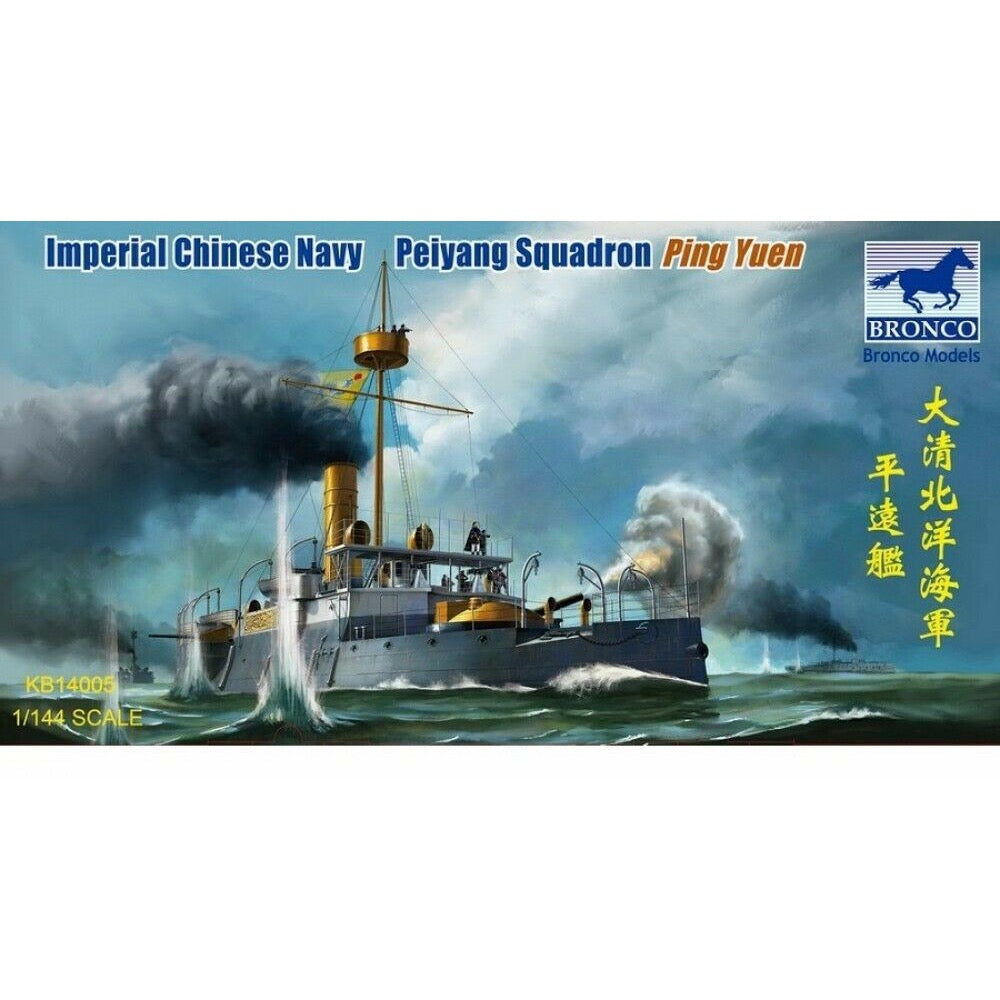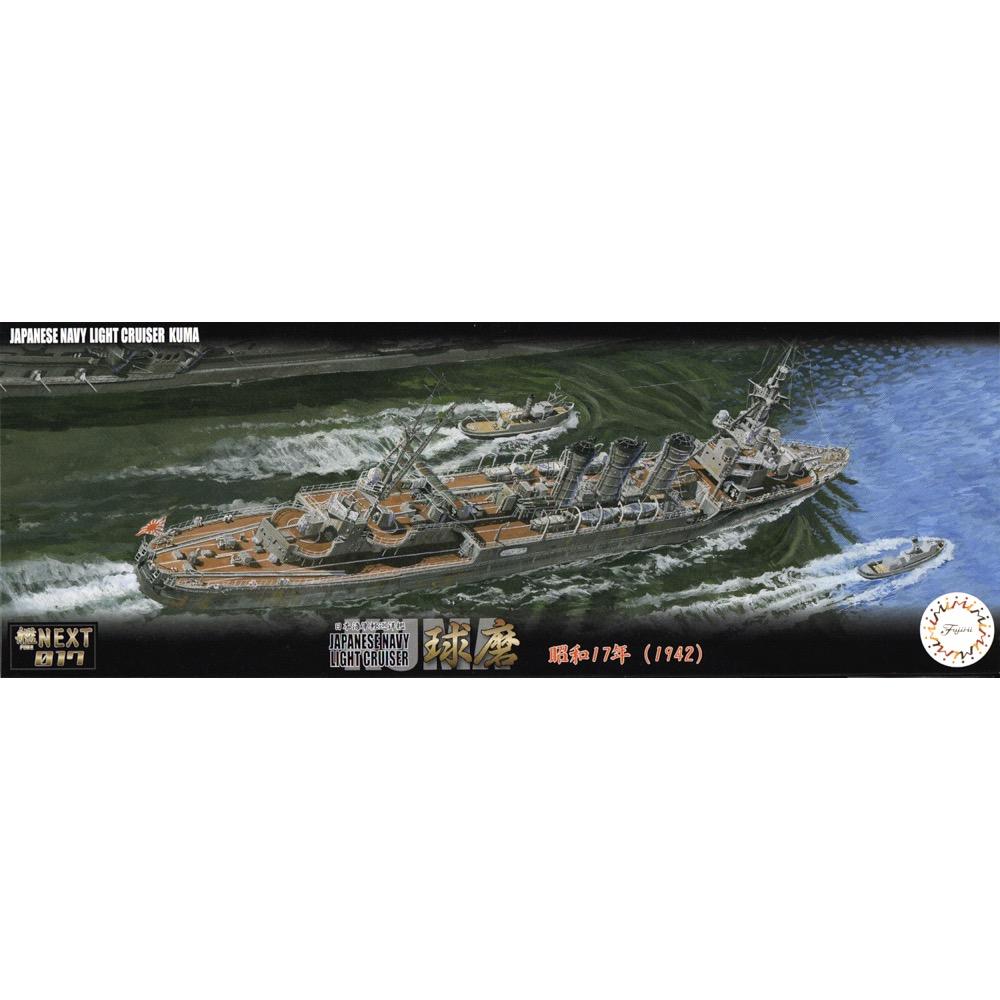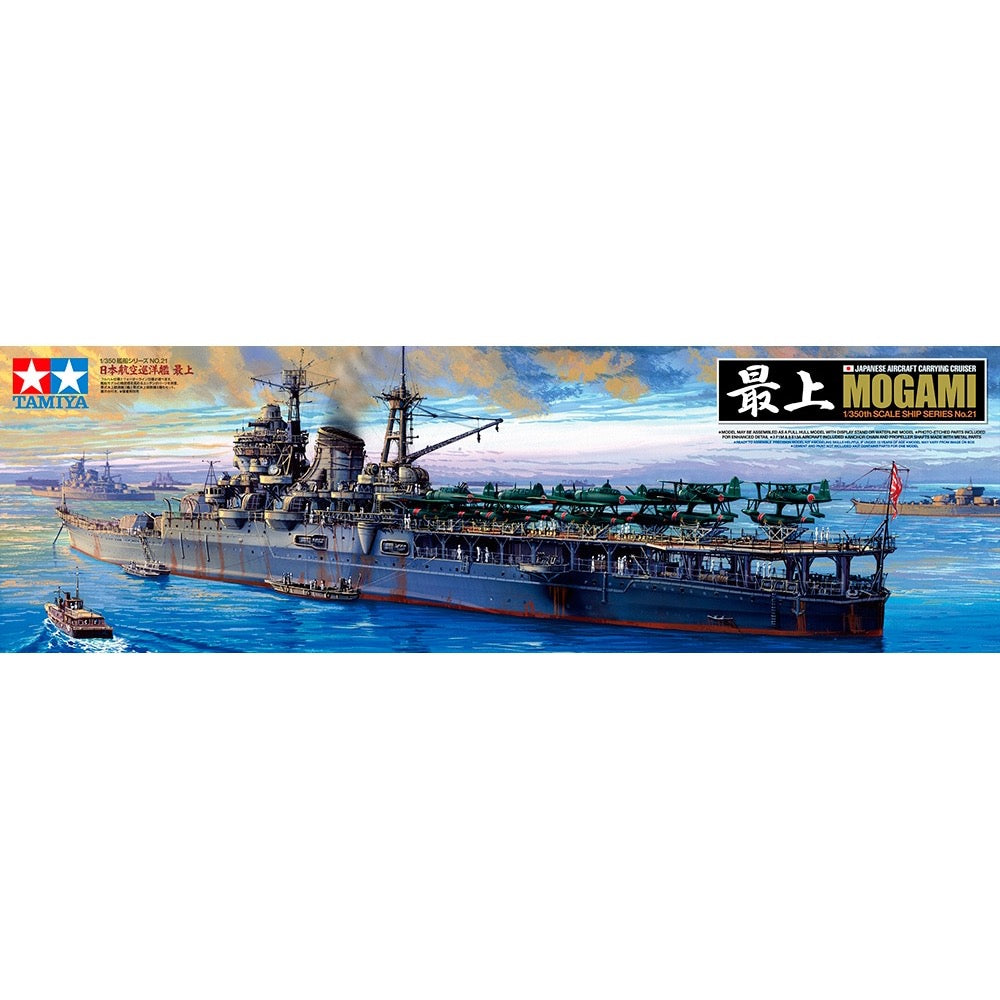
Tamiya 78021 1/350 Japanese Aircraft Carrying Cruiser Mogami
The Aircraft Carrying Cruiser
In the latter half of the Pacific War, the Japanese Navy refitted the Mogami to improve her reconnaissance ability. Construction of the Mogami was completed in July 1935, and she was initially armed with five triple 15.5cm main guns. After the withdrawal of the London Naval Treaty, she was refitted with three triple 20.3cm main guns and became a heavy cruiser. In the first half of WWII, she served at the Malayan Operation and the Battle of Sunda Strait. Later at Midway in June 1942, she was heavily damaged by an aircraft bombing raid but was able to return to port. During repairs, she was fitted with an upper deck which could carry 11 aircraft, and ten triple 25mm anti-aircraft batteries were added for defense. In May 1943, the newly shaped Mogami left the dry docks but due to damaged sustained in November of the same year from air attacks at Rabaul, she underwent further repairs and her armament was once again strengthened. In June, 1944, she served at the defense of the Mariana Islands, and it was in October at the Leyte Gulf where she saw her end when she was attacked by enemy warships suffering catastrophic damage and sank into the depths of the Mindanao Sea.
Features
-
The ships hull separates into port and starboard parts and one-piece lower hull helps to produce the form of the beautiful bow.
-
Large sized parts depicting the ship's hull and flight deck are secured with screws allowing you to accurately build the model.
-
The precision moldings of the super structure and funnels provide a realistic finish.
-
Transparent parts accurately depict glass part such as the bridge's windows and searchlight lenses.
-
The main guns, torpedo launchers, high angled guns, and catapult are moveable.
-
You can choose either to have the main guns in a stowed or deployed position.
-
Parts such as mast and antenna's are made from strong ABS resin parts.
-
Each machine gun part, fire extinguisher, and heat dissipation board are rich in detail.
-
Photo-etched parts are included for parts such as the crane, catapult, aircraft propellers, aircraft transport trolley, and catapult trolley for an ultimate realistic finish.
-
Metal parts depict anchor chains and propeller shafts.
-
Set includes detailed 3 Mitsubishi F1M and 8 Aichi E13A. Display stands for depicting aircraft in flight are included.
-
Full hull model display stand included.
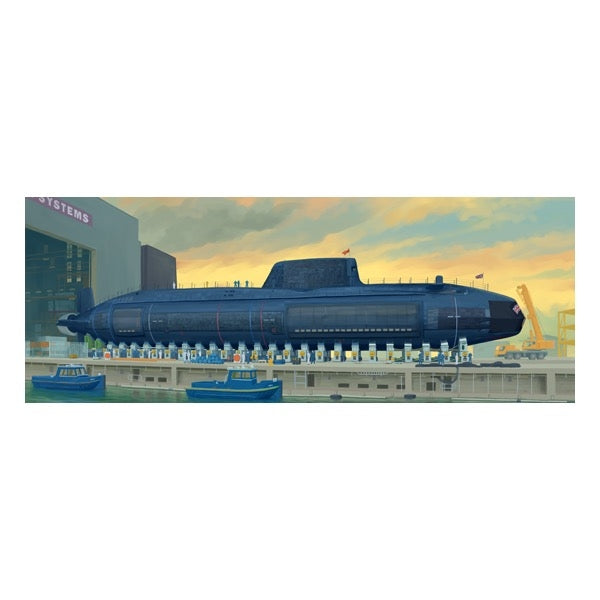
Trumpeter 05909 1/144 HMS Astute British Sub
The ASTUTE class submarine is the latest in the British Royal Navy fleet and was first launched in 2007. This huge submarine has an appearance similar to a whale, and is nuclear-powered, not requiring a single refuel over its 25 year lifetime, although it is not unique in this regard. The ASTUTE class submarine is built by BAE Systems Maritime in Barrow-in-Furness on the north west coast of Britain.
The submarines cost about $2.4 billion US Dollars (USD) each. The ASTUTE class consists of attack submarines, in contrast to the ballistic missile submarines of the VANGUARD class.
Specifications
-
Model Brief: Length: 673mm Beam: 99.6mm
-
Total Parts: 30+
-
Photo Etched Parts: 1 piece
-
Total Sprues: 2 sprues , upper hull and lower hull
-
The kit consists of over 30 parts
-
Contains display stand
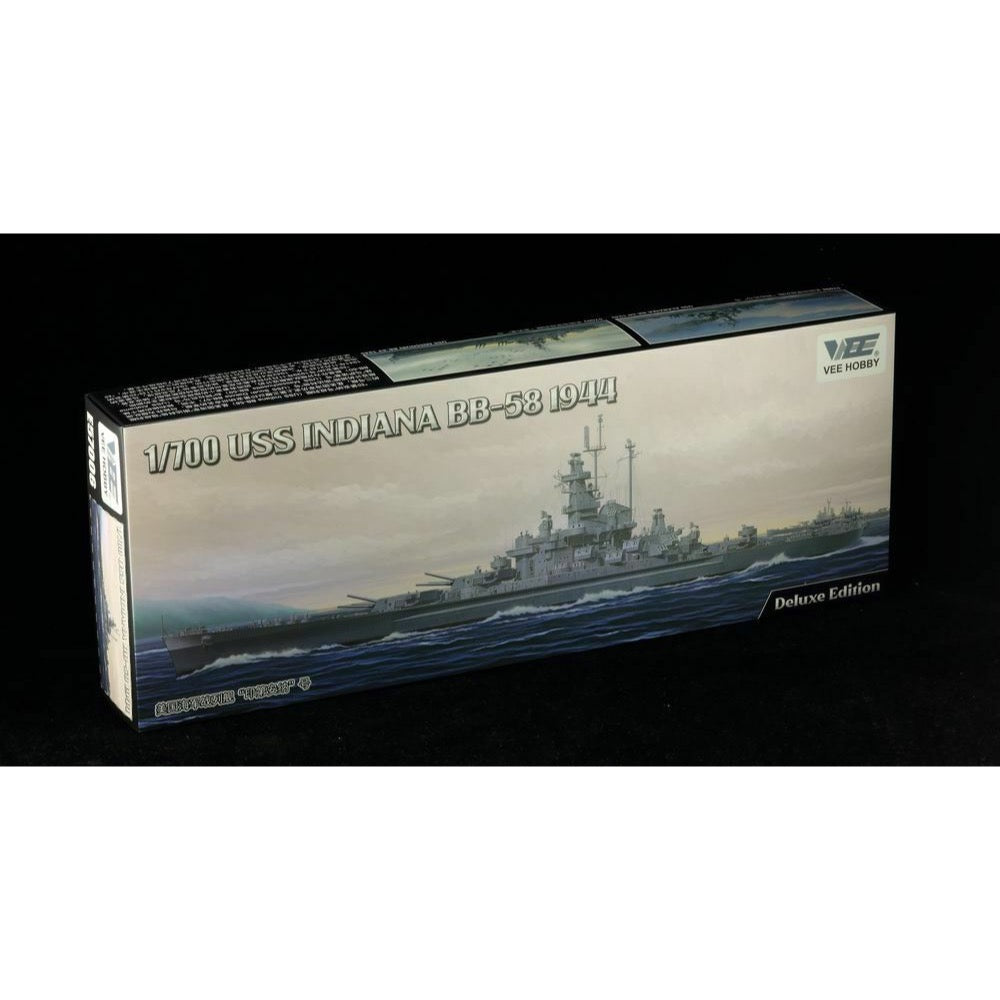
Vee Hobby E57006 1/700 BB-58 Indiana Deluxe Edition
The U.S. Navy battleship Indiana (BB-58) is the second South Dakota-class battleship.
She was launched in 1941, and when she joined the Pacific Fleet and went to the front line, she participated in the Battle of Tarawa in 1943 and the Battle of the Philippine Sea in 1944. She entered the reserve forces in 1946 after the war, and was retired in 1947. The Indiana received nine service stars for her service during World War II.
Features
-
This model kit reproduces the appearance of the Indiana during World War II with delicate details
-
The waterline kit includes decals, as well as additional detail-up parts such as photo-etched parts, a metal barrel and a wooden deck seal
Specifications
-
Item Size: 40.0cm x 15.2cm x 5.5cm
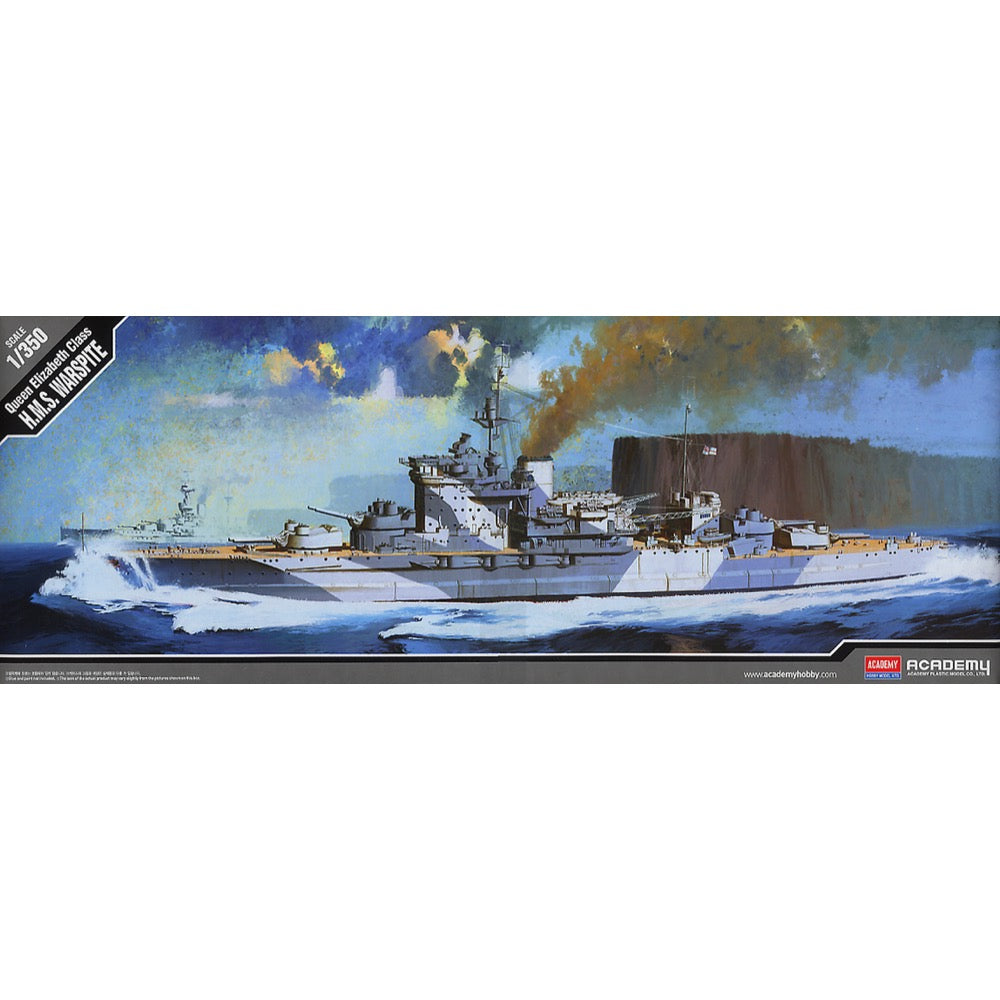
Academy 14105 1/350 H.M.S. Warspite Queen Elizabeth Class
HMS Warspite was a British battleship laid down in 1912, launched in November 1913, and commissioned in the Royal Navy in March 1915. The total length of the ship was 195 m, width 27.6 m, and full displacement - 33,400 tons. The maximum speed of battleship Warspite was around 25 knots. The main armament at the time of the launch was eight 381 mm guns in four twin turrets. The secondary armament consists of 12 152mm guns, 2 76mm guns, 4 47mm pom-poms, and 4 533mm torpedo tubes.
HMS Warspite was one of five Queen Elizabeth-class battleships. Battleships of this type were built just before the outbreak of World War I, as a British response to the rapid naval armament of the Second German Reich. They are often referred to as super-dreadnoughts - for the first time in the history of the navy, 381 mm artillery with 42-caliber barrels was used on them, and for the first time battleships reached a speed of about 25 knots. Many of the solutions used on this type were reflected in later British battleships. All ships of the Queen Elizabeth class also underwent significant modifications in the interwar period: first of all, they received new engine rooms, better and more efficient boilers, their armor was thickened, the profile of superstructures was changed and the anti-aircraft artillery was significantly expanded. Thanks to these upgrades, these ships were not inferior to other German or Italian battleships, as well as many Japanese battleships - with the exception of the Yamato class. The HMS Warspite battleship was built at the Dockyard shipyard in Devonport. From the moment he entered service, he was part of the Grand Fleet and, as part of it, took part in the Battle of Jutland in 1916, in which he did not suffer any serious damage. For the rest of World War I, he did not enter into any serious combat contact with German ships. However, he took part in the internment of German units in Scapa Flow. In the interwar period, it served both in the Atlantic Ocean and in the Mediterranean Sea. His glorious and rich combat route during World War II began with the struggle at Narvik in April 1940, contributing significantly to the Allied success in the so-called II Naval Battle of Narvik on April 13, 1940. Shortly thereafter, he was transferred to the Mediterranean Sea where he took part in the Battle of Cape Matapan (March 1941). In the second half of 1941, he was sent to the USA for modernization, which lasted until the end of that year. In early 1942, it found its way to the Indian Ocean, but later returned to the Mediterranean Sea - shortly before the invasion of Sicily in July 1943. In September of that year, it supported the Allied landing at Salerno, where it suffered severe damage. After the renovation, it supported the Allied forces landing in Normandy in June 1944 with their artillery fire. The last time he took part in the action was November 1944. After the war, in July 1946, it was scrapped.
Academy's detailed kit of the British battleship HMS Warspite as it appeared in 1943. Includes photo-etched metal detail parts and a display stand.
This is an injection-plastic ship model kit.
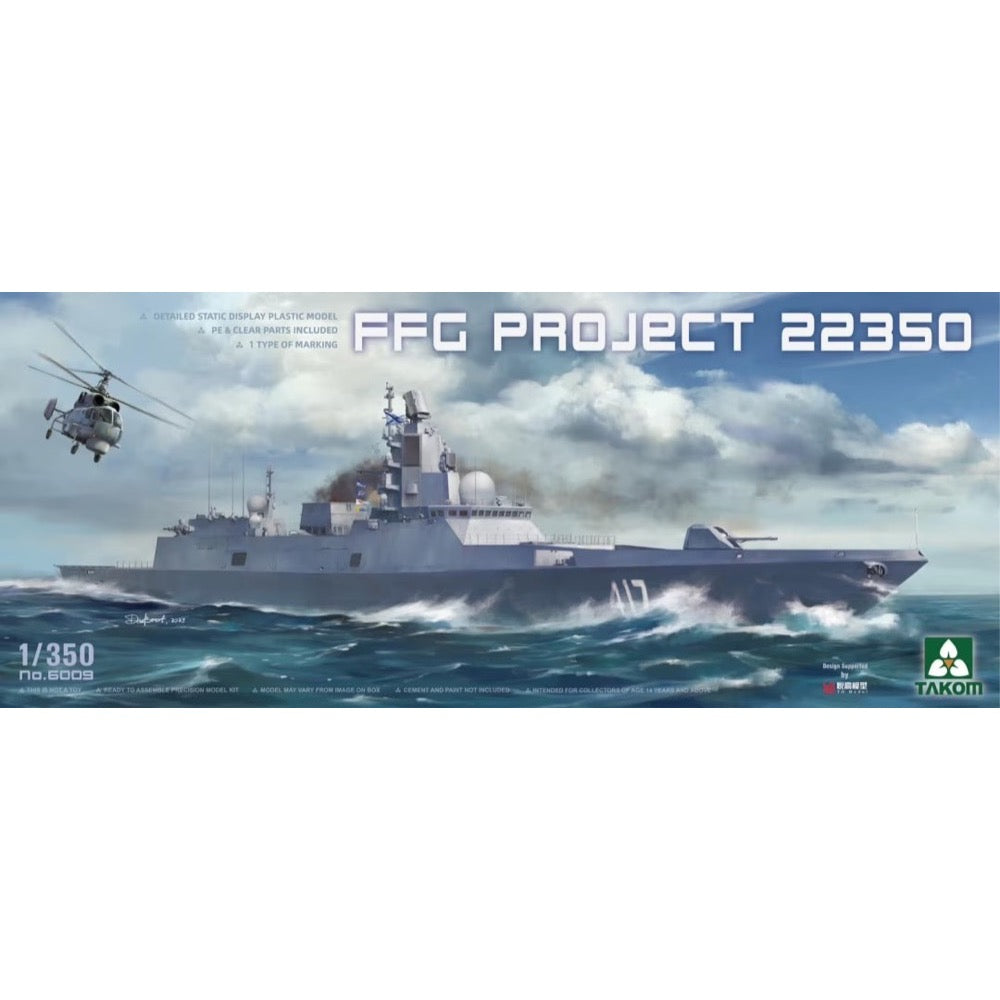
Takom 6009 1/350 FFG Project 22350
The 22350 frigate is a class of frigates of the Russian Navy. The 22350 frigate is a surface combat ship designed and built in the early 2000s as a 4,000-ton class frigate based on the 3,000-ton class 1135 type patrol ship (also known as the Krivak type). Construction of the name ship Admiral Gorshkov began in 2006, and she was deployed to the Northern Fleert in 2018. The second ship, Admiral Kastanov, was deployed to the Northern Fleet in 2020, and the third ship, Admiral Golovko, landed in the same year and is currently under construction.
Features
This model kit from Takom comes with clear parts, photo-etched parts, and decals for one version. Parts for a decorative stand are included as well.
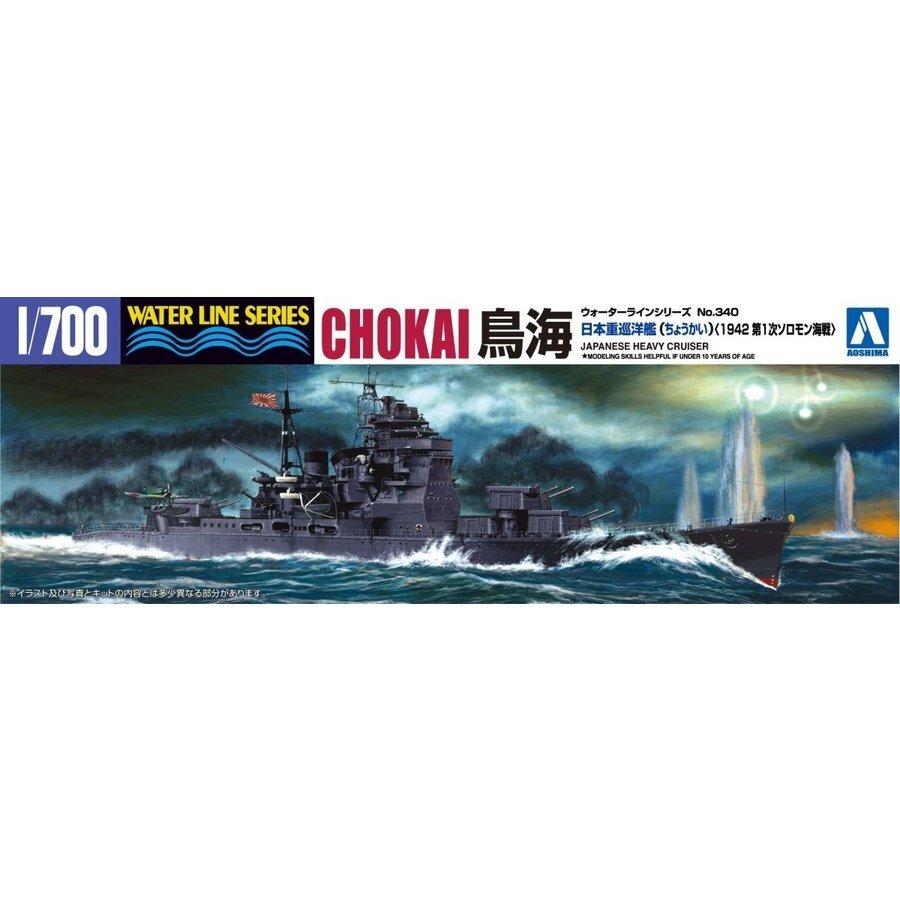
Aoshima A004539 1/700 IJN Heavy Cruiser Chokai 1942
Chokai was a Japanese heavy cruiser the keel of which was laid in 1928, launched in April 1931, and commissioned in the Imperial Japanese Navy in June 1932. The length of the ship at the time of launching was 203 m, width 19 m, and the actual full displacement, after modernization - 15,700 tons. The maximum speed of the cruiser Chokai was up to 35.5 knots. The main armament at the time of the launch was 10 203 mm guns in five turrets, two guns each, and the additional armament included: 4 127 mm guns and 8 610 mm torpedo tubes.
Chokai was the fourth and final Takao-class cruiser. Cruisers of this type were built respecting the limitations of the Washington Disarmament Treaty signed by the government in Tokyo in 1922. The ships of this type are clearly based on the design of the Myoko-class cruisers. The changes concerned: the use of new main artillery cannons, improved armor, expansion of the bow superstructure and better layout of the torpedo armament. Emphasis was also placed on high top speed. The pursuit of such extreme goals led to the creation of ships with powerful artillery and torpedo armament, great speed, but with a lower range than assumed, average sea bravery and with considerable stability problems. Subsequent modernizations on the first two ships of this type partially eliminated these disadvantages, but did not completely eliminate them. The combat route of the cruiser Chokai in World War II began as early as December 1941 with support for Japanese landings in Malaya. Then, until March 1942, he fought with successes in the area of the Dutch East Indies. In June 1942, he took part in the Battle of Midway, but suffered no major damage in it. Later, he took part in the struggle in the Solomon Islands, and in August 1942 he fought in the Battle of Savo Island - one of the greatest successes of the Japanese light forces in the Pacific! The next important battles in which Chokai took part were: the Battle of the Philippine Sea and the Battle of Leyte Bay in 1944. In the course of a recent struggle, Chokai was sunk on October 25, 1944.
This is an injection-plastic ship model kit.
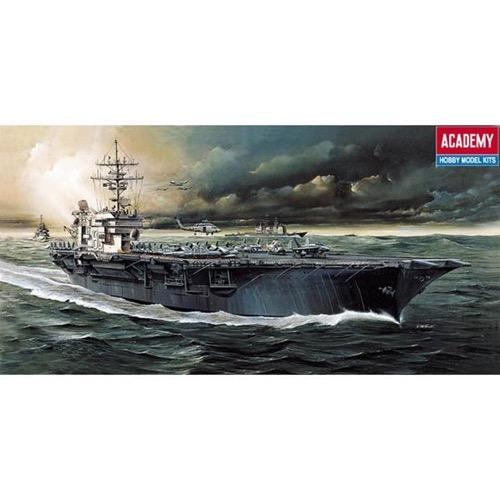
Academy 14210 1/800 Carrier USS Kitty Hawk 1444
USS Kitty Hawk (CV-63) was an American classic-propelled aircraft carrier. The keel for this unit was laid in 1956, the launch took place in May 1960, and the commissioning to the US Navy took place in 1961. The total length of the ship was 323 meters, the overall width was 86 meters, and her displacement was about 84,000 tons. The maximum speed did not exceed 33 knots. The on-board armament initially consisted of Terrier rocket launchers (later replaced by Sea Sparrow launchers, and later - by RIM-116 launchers) and up to 4 sets of Vulcan Phalanx CIWS cal. 20 mm. The aircraft carrier could take up to 85-90 aircraft on board.
The USS Kitty Hawk (CV-63) was the lead ship of the carrier class of the same name - Kitty Hawk. The ships of this type were essentially a modernized version of the Forrestal ships. The main changes concerned the enlargement of ships, changes to the layout of the airlifts and the flight deck. The USS Kitty Hawk (CV-63) was built at New York Shipbuilding. Shortly after entering service, the carrier was directed to the Pacific and assigned to the United States' 7th Fleet. In the years 1962-1964, the unit courteously visited the ports of Japan and the Philippines. Since 1965, the USS Kitty Hawk on-board aircraft attacked targets in North Vietnam during the Vietnam War. In 1980, the unit underwent modernization and extended service life under the SLEP program. Four years later (1984), there was a collision between the aircraft carrier and a Soviet Victor-class submarine. Ultimately, the USS Kitty Hawk was decommissioned in 2009.
This fantastic kit includes a highly detailed superstructure and mast, finely engraved hull and deck details, deck elevators, and more. A full complement of 58 aircraft including fighters, bombers, helicopters, and E-2 Hawkeye Airborne Early Warning aircraft. Deck vehicles are also included in this kit. A comprehensive decal sheet, precise colour chart and a large display stand complete this marvellous kit.
Features
- Highly detailed mast & superstructure
- Various deck aircraft & vehicles included
- Display stand with nameplate included
- Requires plastic cement and paint.
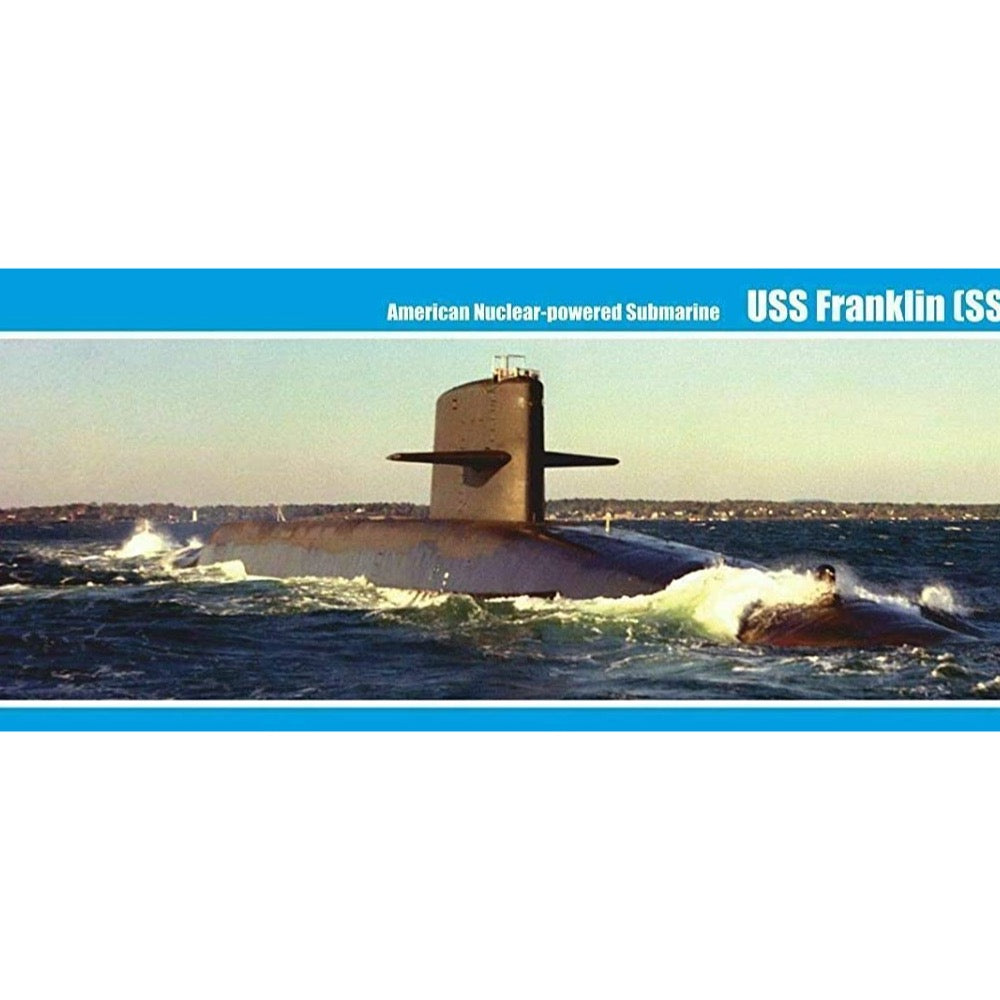
Mikro-Mir 350-028 1/350 SSBN Franklin-class
Micro-Mir 350-028 1/350 SSBN Franklin-class Plastic Model Kit
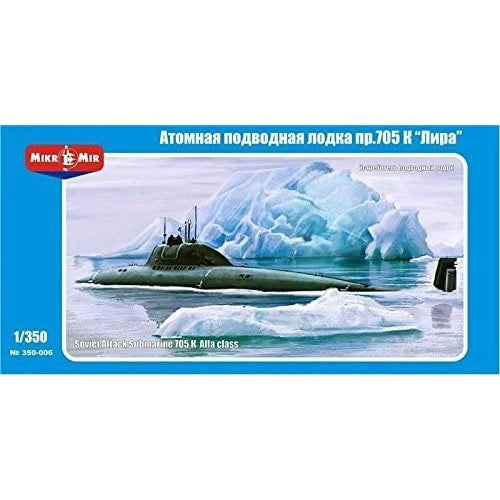
Mikro-Mir 350-006 1/350 pr.705K Alpha
Micro-Mir 350-006 1/350 pr.705K Alpha Plastic Model Kit



